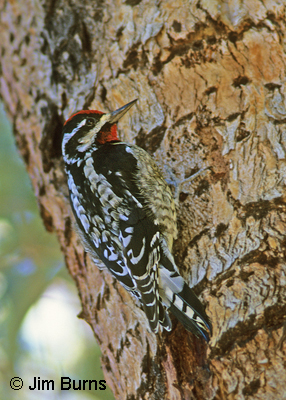
Birds are typically named in one of four ways: for someone (Lucy's warbler honors the 13 year old daughter of Spencer Baird, an early director of the Smithsonian); for a physical feature (yellow-headed blackbird); for a characteristic behavior (turnstones are sandpipers which use their stout, wedge-shaped bills to flip small rocks and beach debris in their search for food); or for their vocalizations (to some early ornithologist the high, strident, two-syllable "song" of the killdeer sounded like this shorebird was calling "kill deer!").
Some common names evolve through usage from something logical to something not so much. An English thrush similar to our American robin was originally known as a redbreast. Brits began attaching "Robin," a diminutive nickname for Robert, to their redbreast until it became robin redbreast. When a similar, brightly colored thrush was discovered in the settling of North America, it too became robin redbreast, but the "redbreast" was gradually dropped. Now one of our continent's most beloved birds bears an irrelevant common name rather than one which would instantly match it with its most recognizable field mark.
Years ago at a youth soccer match I heard a parent scream at a referee, calling him a "yellow-bellied sapsucker." The referee wasn't amused. I'm guessing he wasn't a birder. Birders know the four species of sapsuckers as members of the woodpecker family which have carved out, pun intended, a special niche for a food source mostly free of competition.
The sapsuckers, unlike other woodpeckers, drill out neat rows of shallow holes along the trunks of trees, providing themselves with three types of nourishment--the sap itself which they lap up with a brush-like adaptation on their tongues, the green inner bark, the cambium, which they eat, and the insects attracted to the sap. Other species, particularly hummingbirds, have learned to "trapline" along sapsucker routes to avail themselves of this food source which they can't create for themselves.
Many consider the four sapsuckers our most beautiful woodpeckers, the males mostly black with red chins, varying amounts of yellow on the underparts, large white wing patches and bands of white on the face. Red-naped and Williamson's breed in the mountains of Arizona, red-breasted is a Pacific coast nester, and the yellow-bellied is a bird of our eastern forests. Red-napeds are commonly found in Arizona's desert lowlands in winter.
By woodpecker standards, the sapsuckers are quiet and inconspicuous, particularly in winter. Often the first clue to their presence at this season is the discovery of a host tree bearing several rows of tiny holes looking like nothing so much as a giant cribbage board. Sit quietly and wait for the player to appear on its next round.
Sapsucker. It sounds goofy, but if you know the story behind the name it makes sense, a perfect characterization of the fascinating evolutionary step which these special woodpeckers have taken.